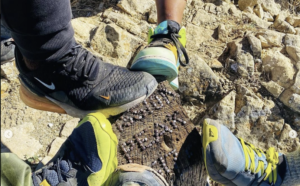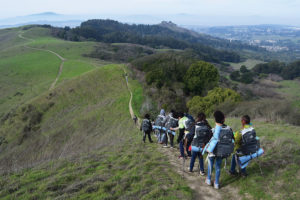Currently, the East Bay has 175 miles of pedestrian and bicycle trails serving over 2.5 million people across the Alameda and Contra Costa counties. This network already connects parks, schools, shops, jobs, and transit stations. But there are still significant gaps, notably around Hercules, Martinez, Albany, Union City, Dublin/Pleasanton, and Antioch/Brentwood.
The East Bay Regional Park District is poised to start filling those in after this week’s announcement of a $10.2 million grant from the U.S. Department of Transportation.
Park District General Manager Pat O’Brien says this money — along with funds from 2008’s Measure WW — will enable the district to create a truly comprehensive system of pedestrian and bicycle friendly corridors in the East Bay. “This will be the largest urban-metro paved trail system in the United States,” says O’Brien.
The District’s application to the federal TIGER II program competed with 1,000 others — totaling $19 billion in requested funds — for a share of the $600 million awarded by the Department of Transportation. “These [grants] usually go to bridges, freeways, stuff like that,” says O’Brien. “It’s not common for trails like this to get funded.” The district’s Green Transportation Initiative was the only Northern California project to receive funding.
“This is really historic,” explains O’Brien, “We’ve wrapped [this grant] around a whole new concept of ‘green transportation’ in a major urban area.”
But with a core mission of providing access to protected open spaces and recreation areas, how does the park district see itself bridging the gap to regional transit? “I don’t think there is a gap,” O’Brien is quick to answer. “Since 1970, we’ve not only been doing unpaved trails [in parks], but also urban paved trails and multi-use trails. This grant is really to hook up the paved trails already in existence, so the whole network interlocks.”
In fact, O’Brien says the park district has a crucial role to play in today’s changing society, as we confront climate change and crises like the Gulf oil spill. “The trails are recreation and health focused,” says O’Brien, “but they also have this functional component of transportation where people can use them to go to school, to work, to shop, or to hook up with BART or the train station.”
So, when can East Bay residents expect to see crews on the ground? O’Brien says, “A couple projects [will be] ready to go by the end of next year.” Funds still need to be allocated and the inevitable red tape lurks, but folks itching to leave the car in the garage — or better yet, in the dealer’s lot — need not wait much longer.

.jpg)



